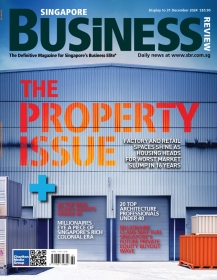
What is the secret to sustained development?
The toolbox of improvement techniques available to the modern Singaporean executive has expanded rapidly in the last 25 years.
From Lean manufacturing, to Six Sigma, to Kaizen, there are plenty of tools available to choose from, and a wide range of companies and individuals to help you apply them, or even apply them for you.
As with all things, there will be varying degrees of success, but something, which remains common with many of these programmes, is the absence of sustained, long-term improvement.
As an Oliver Wight consultant, I have been asked to assist many an organisation after it had implemented an improvement initiative (and sometimes multiple initiatives), which didn’t deliver on promise.
There may have been short-term gains, but not the sustained benefits or long-term cultural change that were trumpeted when the programme began or, more to the point, when the initial investment was made.
Too often this lack of sustained improvement is due to the simple fact that the improvement methodology used has been applied in the wrong place, at the wrong time.
One common cause of failed improvement initiatives is that senior executives are often guilty of pushing them on to their organisations without understanding the readiness or capability of their people to complete them. Frequently, the result of this is under-resourced initiatives that fail to deliver the planned benefits.
In many organisations individuals spend a significant amount of time fixing things that have gone wrong, on top of just performing the tasks and processes that make up their ‘day job’. In this type of environment, the ‘routine things don’t happen routinely’ and a significant proportion of time is taken up by ‘fire fighting’.
As a result, people have little or no time even to work on improving their ‘day job’ let alone to implement an improvement programme; the reality here, is that key individuals already have to work long hours to cope with their everyday work and the seemingly never ending stream of issues that arise on a daily basis.
Hardly surprising then that in such an environment, the executive’s internal pitch for improvement activity can be a very difficult sell.
In this situation, focus needs to shift from complex improvement initiatives, to concentrating on fixing and integrating core business processes – product, demand and supply – to ensure the routine things do happen routinely.
Once business processes are under control and operating at levels of capability in excess of 95%, the time spent ‘fire fighting’ will reduce significantly. This can then be replaced with project-based improvement activity that is aligned with strategy.
This forms the basis for making real productivity gains, because it allows time for the implementation of waste identification and elimination tools found in methodologies such as Lean and Kaizen. Subsequently, the time taken to do the ‘day job’ can be reduced further.
But you must resist the temptation to rush into implementing Lean, Six Sigma or Kaizen programmes, before you are truly ready.
Irrespective of the tools you select, certain foundational elements must be established first. To transform a ‘fire fighting’ organisation and achieve real long-term improvement, you must first have your processes under control; otherwise you are destined to fail.
You need consistent direction and communications, standardised processes, education and training, as well as widespread adherence to procedures.
If you are to succeed in attaining defect levels expressed in parts per million, rather than percentages, or make step changes in performance then these basic building blocks must be put in place, less glamorous though they may be.
To the cost of their organisations, too many executives have bypassed or missed the point of some of the longer-established and more fundamental improvement tools, in a rush to adopt the latest panacea being peddled by the ‘experts’.
Stuart Harman, Partner, Oliver Wight
























 Advertise
Advertise






